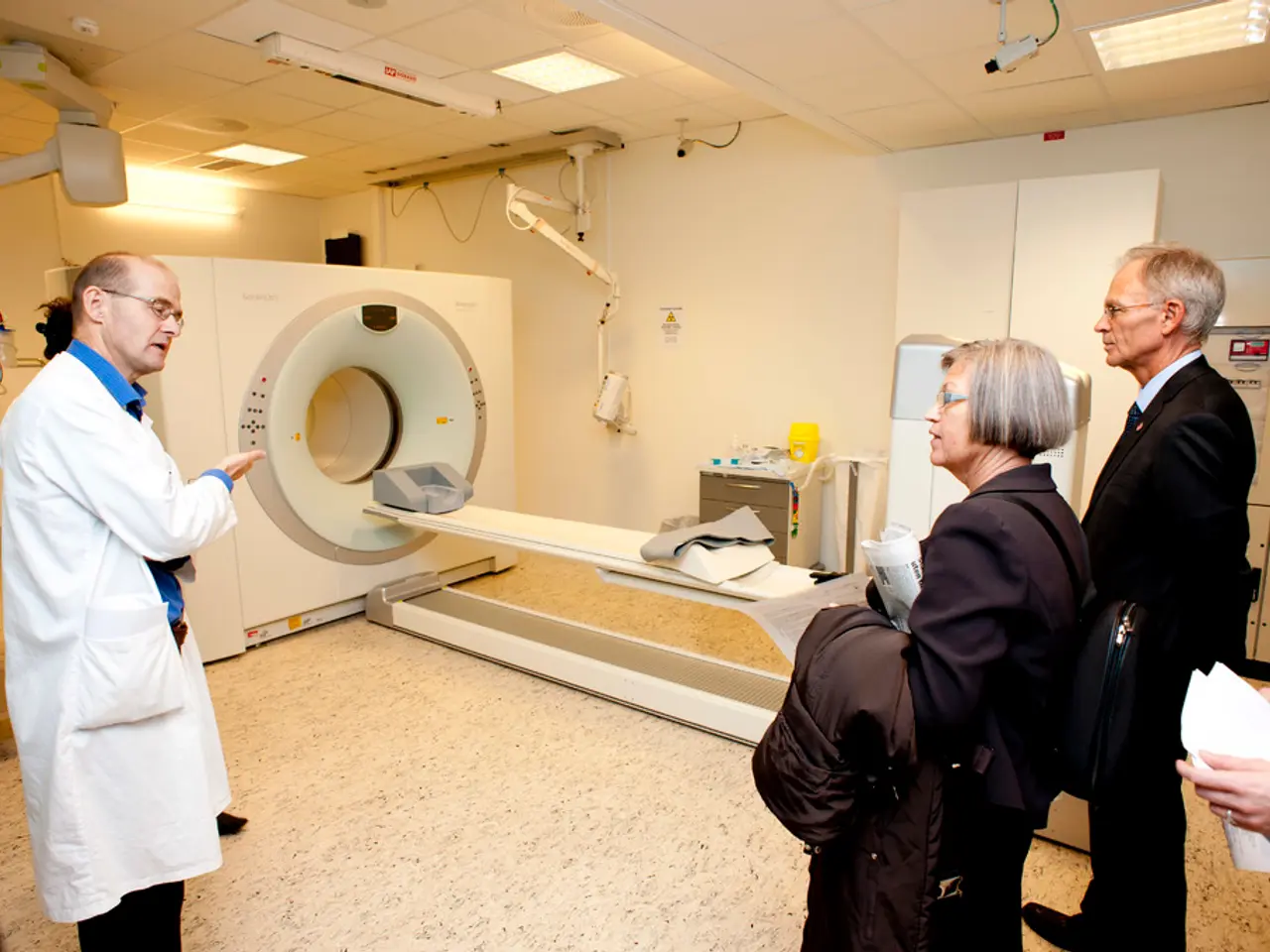Inflammation's Breakdown: Classifications, Symptoms, Triggers, and Remedies
In recent years, chronic low-grade inflammation has emerged as a significant factor in the development and progression of metabolic syndrome (MetS), cardiovascular disease (CVD), and obesity. This article explores the intricate mechanisms linking chronic inflammation to these conditions.
### Chronic Inflammation and Metabolic Syndrome
Pro-inflammatory cytokines, such as tumor necrosis factor-alpha (TNF-α) and interleukin-6 (IL-6), disrupt insulin signalling pathways, making cells less responsive to insulin and contributing to systemic insulin resistance, a hallmark of metabolic syndrome. Central (visceral) obesity triggers inflammation as expanded adipocytes become hypoxic and attract immune cells, leading to the secretion of pro-inflammatory cytokines and reduced production of anti-inflammatory adiponectin. This dysfunctional adipose tissue also releases free fatty acids, which further promote insulin resistance and liver fat accumulation.
### Chronic Inflammation and Heart Disease
Inflammation is a key driver of atherosclerotic plaque formation and instability. Cytokines promote endothelial dysfunction, vascular inflammation, and thrombotic events, accelerating the progression of heart disease. Chronic inflammation, as seen in metabolic dysfunction-associated steatotic liver disease (MASLD), is linked to an increased risk of atrial fibrillation. Elevated cytokines not only cause liver damage but also contribute to the pathogenesis of cardiovascular diseases, including atrial fibrillation. Inflammation also contributes to vascular stiffness and impaired endothelial function, amplifying the risk of hypertension, another major risk factor for heart disease.
### Chronic Inflammation and Obesity
In obesity, excess fat accumulation—especially visceral fat—becomes a significant source of chronic, low-grade inflammation. This is mediated by the infiltration of immune cells into adipose tissue and the subsequent release of inflammatory cytokines. The resulting inflammatory milieu exacerbates insulin resistance, dyslipidemia, and hepatic steatosis, creating a vicious cycle that perpetuates metabolic dysfunction and further weight gain. Inflammatory signals from adipose tissue affect distant organs, including the liver (promoting steatosis and insulin resistance) and the cardiovascular system (promoting atherosclerosis and arrhythmias).
### Summary Table: Key Pathways
| Condition | Inflammatory Mechanism | Clinical Consequence | |----------------------|----------------------------------------------------------|----------------------------------------| | Metabolic Syndrome | Cytokine-mediated insulin resistance, adipose dysfunction | Insulin resistance, dyslipidemia, hypertension | | Heart Disease | Endothelial dysfunction, plaque instability, arrhythmia | Atherosclerosis, AF, hypertension | | Obesity | Adipose-derived cytokines, systemic inflammation | Insulin resistance, hepatic steatosis, weight gain |
### Expert Perspective
"Central obesity brings along insulin resistance and systemic low-grade inflammation, which contribute to the complex pathophysiology of the metabolic syndrome. Overnutrition instigates the expansion of adipocytes, causing local hypoxia and the infiltration of adipose tissue by immune cells. This leads to the secretion of proinflammatory cytokines... culminating in metabolic dysfunction and insulin resistance."
Chronic inflammation acts as both a link and an amplifier between obesity, metabolic syndrome, and heart disease, creating a pathogenic triad that is increasingly prevalent in populations with sedentary lifestyles and poor dietary habits. It is crucial to understand these mechanisms to develop effective strategies for the prevention and treatment of these diseases.
- The disruption of insulin signalling pathways by pro-inflammatory cytokines in metabolic syndrome, such as TNF-α and IL-6, contributes to systemic insulin resistance, a hallmark of the condition.
- In the progression of heart disease, inflammation, as seen in metabolic dysfunction-associated steatotic liver disease, is linked to an increased risk of atrial fibrillation, adding to the pathogenesis of cardiovascular diseases.
- Psoriatic arthritis, a medical-condition involving chronic inflammation, could potentially be managed better with the predictive analysis of health-and-wellness data to optimize painmedications and improve treatment outcomes.
- In the context of science, understanding the link between chronic inflammation and obesity-related conditions like bipolar disorder could lead to breakthroughs in the medical-field, offering new insight into the disease's pathogenesis and potential treatments.
- The complexity of the connection between chronic inflammation and the development and progression of various health-and-wellness issues, such as metabolic syndrome, heart disease, and obesity, highlights the need for more in-depth research and innovative solutions to combat these conditions effectively.
- TheRole of science in the medical-field is paramount, helping to identify and understand the intricate mechanisms linking chronic inflammation with a wide range of medical-conditions, from psoriatic arthritis to lung conditions like COPD and NSCLC, ultimately leading to improved health-and-wellness outcomes for many affected individuals.




